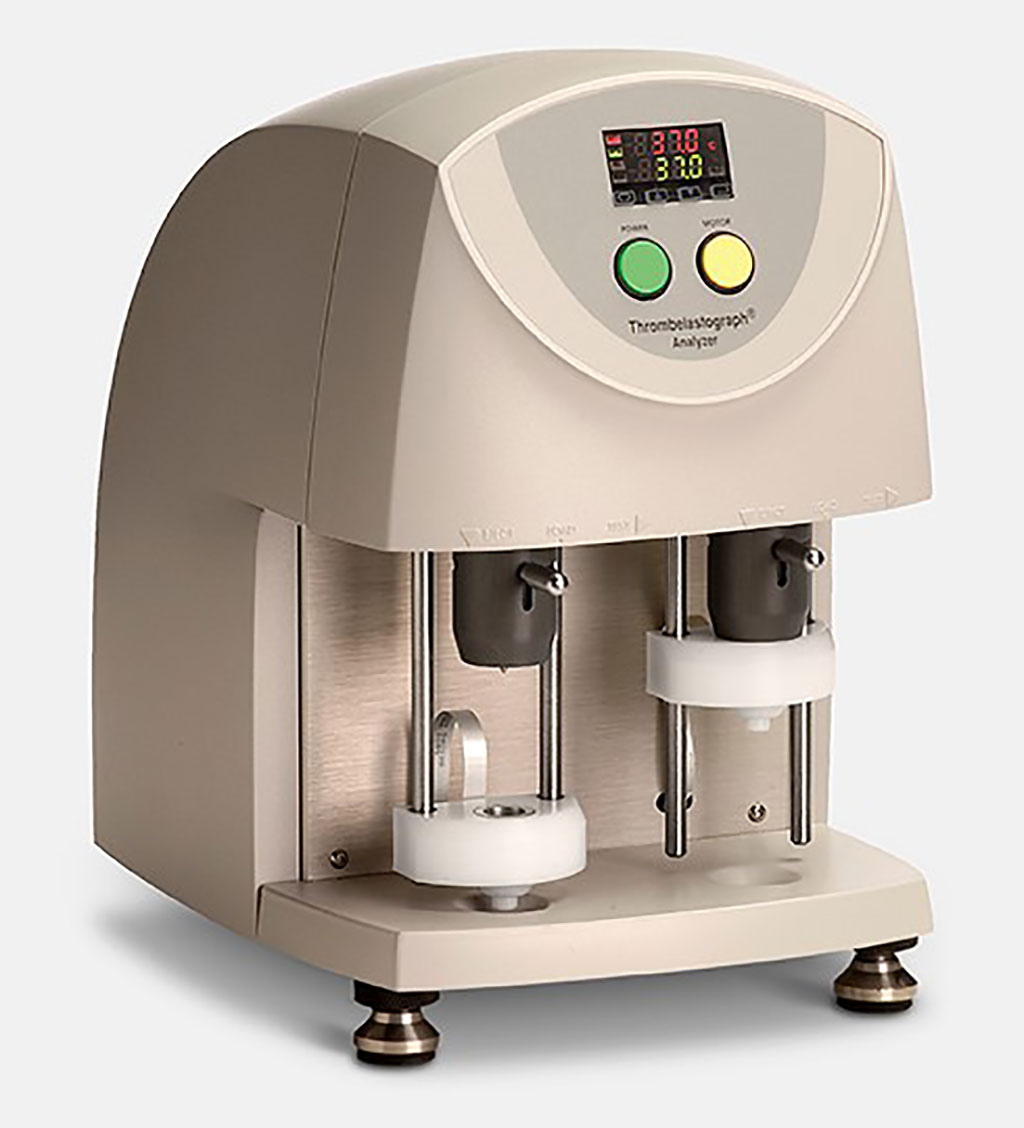Coagulopathy Testing Linked to Better COVID-19 Outcomes
By LabMedica International staff writers
Posted on 19 Jan 2021
Significant infection with severe acute respiratory syndrome coronavirus 2 (SARS-CoV-2) may lead to development of coagulopathy, most typically a hypercoagulable state. In addition to thrombotic conditions, coronavirus disease 2019 (COVID-19) patients may develop hemorrhagic complications, which have been under recognized or inadequately emphasized in prior studies.Posted on 19 Jan 2021
Thromboelastography (TEG), being a whole blood assay, is a more inclusive technology that evaluates the overall contribution of blood cells, platelets, and plasma during clot formation by mimicking in vivo coagulation processes. TEG can measure profound hemostatic derangements, and it identifies key dysfunctional components, from the initiation phase of blood clotting to the fibrinolysis phase.

Image: The TEG 5000 Thrombelastograph Hemostasis Analyzer system is a diagnostic instrument that provides comprehensive whole blood hemostasis testing that can help assess bleeding and thrombotic risks, and also monitor antithrombotic therapies (Photo courtesy of Haemonetics).
A multidisciplinary team working with the Memorial Regional Hospital (Hollywood, FL, USA) and the hospital-based Thromboelastography Task Force (TTF) prospectively followed 100 patients meeting certain criteria to assist with the application and interpretation of initial and on-going TEG findings over a five month period. Included in the TEG was platelet mapping (TEG-PM). Among the 100 patients studied, ages ranged from 32 to 91 years, and 67% were male, 46.5% African American, 29.3% Hispanic.
For identification of Coagulopathy Based on TEG-PM, the TTF used the processing device TEG 5000 Thrombelastograph Hemostasis Analyzer (Haemonetics, Boston, MA, USA), with PM employed to specifically assess activation of the platelet’s cyclooxygenase 1 (maximum amplitude [MA]-arachidonic acid [AA]) and P2Y12 pathways (MA-adenosine diphosphate [ADP]). Follow-up TEG-PM assays were clinician ordered and collected every 48–72 hours when possible.
The scientists reported that among 100 COVID-19 patients who got TEG-PM upon admission at a center where it was routine for hypoxemic patients in the emergency department, death was 7.7-fold more common among those whose treatment did not follow the TEG-guided treatment algorithm (17 of 28 [60.7%] versus four of 72 [5.6%]. Inflammatory markers were associated with clinical deterioration, pulmonary failure (PF), acute kidney injury (AKI), and death. D-dimer was significantly higher in non-Algorithm-Guided (AG) patients, but ferritin and C-reactive protein (CRP) were not significantly different between the two groups. For non-survivors, irreversible thrombocytopenia (< 100,000/µL) was an unmistakable sign of deterioration/death.
The authors concluded that COVID-19 coagulopathy has a multifaceted, chameleon spectrum of coagulopathy with platelet aberrations often playing a large role. Therefore, they recommended that patient-tailored diagnosis/characterization and treatment of COVID-19 coagulopathy should be based on a standardized algorithm employing TEG-PM. The study was published in the December 2020 issue of the journal Critical Care Explorations.
Related Links:
Memorial Regional Hospital
Haemonetics













